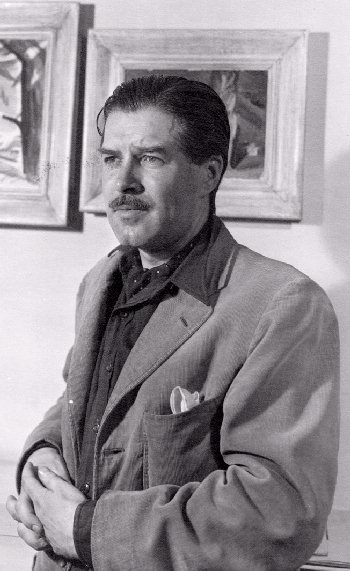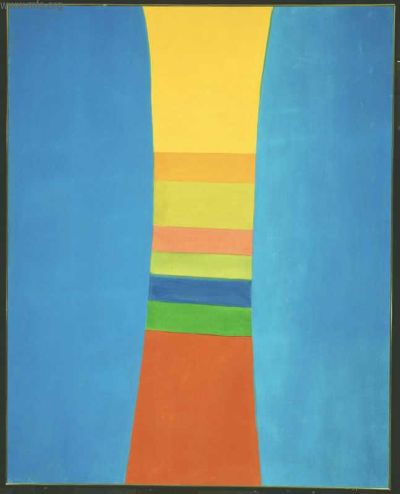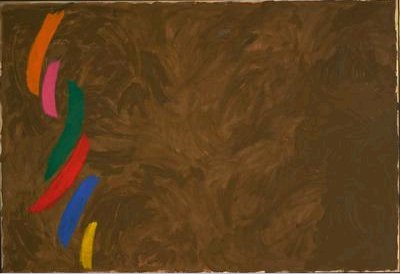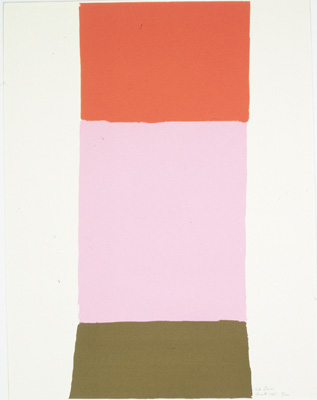| Jack Bush
The Art History Archive - Canadian Art
Abstract PainterBiography by Robert Campbell - 2008. Jack John Hamilton Bush was born in Toronto, Ontario on March 20 1909, but he spent most of his childhood in Montreal, where he studied at the Royal Canadian Academy. Here he was schooled by Adam Sheriff Scott and Edmond Dynnet from 1926-1928 in the basic principles of art, and he was very skilled. As a twenty year old man, Jack began his professional career as a landscape artist in 1929. At first he painted mostly landscapes and was clearly influenced by the Group of Seven. Early in his career, Jack Bush was particularly inspired by the work of Charles Comfort, who was one to become one of his instructors at OCA. The son of Scottish immigrants that settled near Winnipeg in 1912, Charles Comfort worked in commercial art in Winnipeg before moving to Toronto in 1928. One year later, in 1929, Charles hosted weekly two hour life model drawing sessions in his Toronto studio at 25 Severn Street. On occasion a young Jack Bush sketched here with Lauren Harris, A.Y. Jackson, George Pepper and Kathleen Daly. The model was paid a dollar fifty per hour, with each artist contributing to the fee. During the 1930s, when Jack was in his twenties, he ran a commercial art business in Toronto by day, and at night he advanced his studies at the Ontario College of Art. This was of course the predecessor of today’s celebrated art school, and it was located in just one building, 74 McCaul St, the current home of Aboveground Art Supplies. Fredrick Challener, John Alfsen, George Pepper, Charles Comfort and J. E. H. MacDonald, instructed Jack Bush in the principles of modern art from 1929 (Comfort’s sketch classes) right through to 1939. The Group of Seven disbanded in 1932, for many reasons, one of which was probably because they wanted to expand the club and allow more artists like Jack Bush to share their spotlight. Jack was invited to join the Canadian Group of Painters in 1933, and he accepted the invitation. World War II and the chaos in Europe severely depressed the fine art markets in North America, and Jack earned a living as a commercial artist. Like most of his contemporaries, he painting in relative isolation and developed new techniques. It wasn’t until the autumn of 1949, when Jack Bush was forty years old, that he hosted his first solo show at the Gavin Henderson Galleries in Toronto. Like most other Canadian artists of his time, Bush was sheltered from European influences as Toronto and Ottawa were particularly backward places. Montreal was better, but it was a visit to the American Abstract Expressionists in New York City that changed Bush's canvases most dramatically. Although Jack Bush painted large-scale abstract paintings in the early 1950s, he did not fully develop his signature style until later in the decade when he became part of a prestigious club called Painters Eleven, which was founded by William Ronald in 1954 to promote abstract painting in Canada. When influential New York City art critic Clement Greenberg praised the group, their canvases found ready buyers and most of the artists involved enjoyed some commercial success. Greenberg became a mentor to Bush and encouraged him to refine his palette, technique, and approach. Jack was encouraged to abandon his Abstract Expressionist style characterized by hovering amorphous shapes on the picture plane. He would simplify his composition by using an all-over coverage of thinly applied bright colours inspired by his watercolour sketches. As a result of Greenberg's guidance, Bush became closely tied to two movements that evolved from abstract expressionists: Color Field Painting and Lyrical Abstraction. It should be noted here that Jack’s work is based on an abstract record of his perceptions. He did not expect the viewer to see the flower, or hear the music that inspired the art, but to share the emotion of the experience through his painting. After Painters Eleven disbanded in 1959, Jack Bush went on to enjoy a successful career as a respected artist in Toronto. He represented Canada at the 1967 São Paulo Art Biennial, after which his art found great commercial success in New York City. He was eventually honoured as an Officer of the Order of Canada in 1976, and the Art Gallery of Ontario toured a large retrospective of his work that summer. Terry Fenton observes that Jack was above all things a master of color, and that he could make pictures with slabs and streaks of color, and in this manner he was perhaps ‘one of the greatest since Matisse’. His influences must have included his friend, the renowned art critic Clement Greenberg, and the painter Kenneth Noland, both of whom were great admirers of Matisse. But while Noland discovered geometric motifs and the symmetry of abstract geometry, Jack Bush found something similar in pretty things: Christmas wrappings and neckties, women's dresses and flowers, even spilled paint. Nourished on Matisse, Jack’s art eventually seized on the minutia of his own life - he liked to paint common objects, which he could transform into very attractive things. Jack Bush died at the age of 68 in 1977 and two years later, in 1979, the National Film Board of Canada released a one-hour documentary film titled simply ‘Jack Bush’.
Paintings by Jack BushHaunted House - 1945
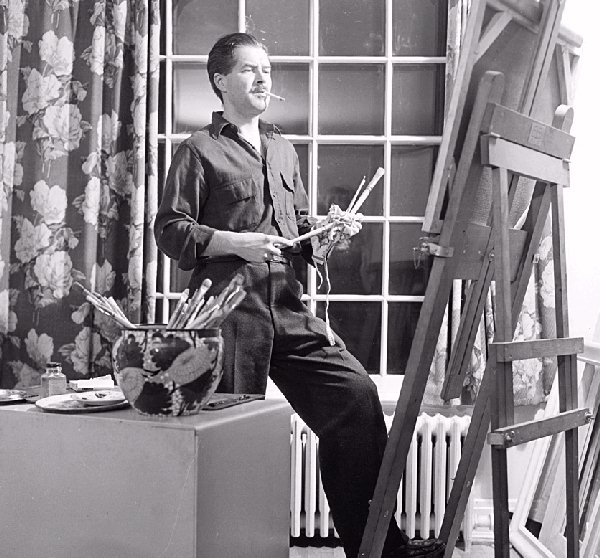
Jack Bush in his Studio - 1968 |
|
|
| ||
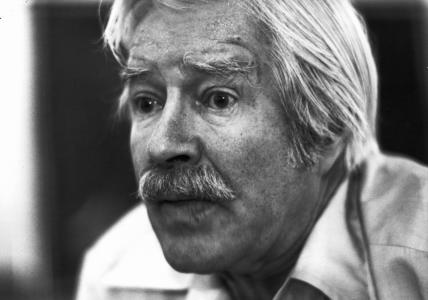
| ||
